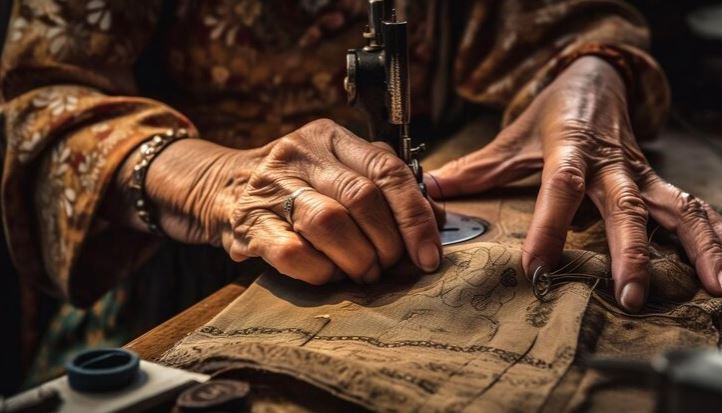The Vedic Education System is an ancient way of learning, which was also started long ago and now prevails in India. It originated in the Vedic period during that time people used to learn from certain books known as Vedas. The Vedas are very old and made up of wise thoughts. They said a lot of things about how to live your life, be kind and so on.
This was a vastly different kind of education system from the schools that we know today. Students did not sit in a classroom studying, as they would learn from one teacher — the guru, being very bright himself.
The students would reside with their guru in a place called the gurukul, and they learned by hearing or listening; asking questions whenever any doubt arose and practised all that was taught in real life.
Vedic Education System
Learning in the Vedic Education System was a unique experience. Not only was education from books and lectures. They resided with their guru who was a kind of guardian or teacher. These children would learn several things from the guru which included reading, writing, a little bit of arithmetic and science. But that’s not all! They also learned music and art, and how to care for themselves and their neighbors.
The young learned from their guru and then repeated it. For example, if they studied plants and went outside to look at them, touch them (haptic-based learning) or learn how they grow. This made that learning very hands-on and relevant to their world.
Vedic Subjects
The Vedic Education System taught many other subjects as well. Ideally, these subjects were created to broaden the worldview of students and generally prepare them for a good life. Subjects (a few main ones):
Vedas: the books of a very ancient time, from which students used to learn. The Vedas introduced them to life, nature and the universe.
Language: They were taught in Sanskrit, which was the language of the Vedas. They started studying Sanskrit which aided them in reading, writing and speaking about the Vedas.
Math and Science🔬: These skills will not be left behind. They learned what counting is, and what quantifying things meant/entailed. They looked at the stars, they studied weather patterns and even body functions.
Type # 4 and Type of Vedic Education Road System, Music & Art — Music & art were two things which gave a special identity to the child. Students were taught to sing and play an instrument, in addition, they worked on arts. It allowed them to emote and empathize.
PE — The students learned the importance of body management as well. Yoga — something that strengthened them physically and mentally. We also learned to discipline ourselves and how to be focused.

How Children Were Brought
The most crucial aspect of the Vedic Education System was the inculcation of good values. The guru used to teach the students how to be kind, honest and respectful. They learned how to be empathetic, diligent and responsible.
Students were learning to live on a shoestring and make do. Through this, they learnt that real happiness comes from doing good things for people, being kind to them and so on. It was when they grew up to become very well-mannered and caring adults.
What was special about the Vedic Education System
The Vedic Education System was unique because it catered to the mind, and body. We weren’t just taught facts and figures but how to be a good, wise or kind person. The kids instead got An education in how to live away from the land And deep within contracted social corridors. They could think deeply about life and how it worked.
One great feature of the Vedic Education System was a lot of interaction between the guru and students. They also weren’t simply an instructor, they were another kind of father and brother. Students had respect for their gurus and obeyed them carefully. Guru loved his students more than anything, he wanted them to be successful in life.
How is Vedic Education Different from Today or Modern Education?
So far, the Vedic Education System is very different from what we are currently following. The point here is that students today typically experience being educated in a class with many of their peers. They talk to the teacher, do their homework and have exams. Instead Helen and her classmates are taught using books, and computers – subjects such as mathematics, science history or language.
This method of imparting education was more personal and practical than this Vedic Education System. They had gurus in their house and practised by doing, even if what they did was real; They did not simply study to achieve well on exams; they studied so that their global would make extra feel to them, and which will be higher people.

What Vedic Education System Can Teach Us
Such is the ancient age of the Vedic Education System, but still, there are many things to learn from this system in today’s date. The most important takeaway from some of the learnings is learning by doing. We may do so with all sorts of things avoiding simply studying them in books. This is what gives us to better understanding of it and for a long time, we remember these things.
One of the lessons is to instil good values, as this goes a long way. The Vedic Education System taught its children to be kind, honest and good human beings. On any level, these are good traits to have as they can contribute positively to our lives leading us toward happiness and success. If we are nice to one another and take care of our world it would be a better place.
There is also a lesson we can learn from the intimacy of the relationship between guru and students. Human relationships, like the ones we all once had as children and that most of us at least retain among family members or friends in NIRD schools today, are now either forbidden outright by school policy (hugging a sad child who scrapes his knee over 50 times is inter alia criminally).
Council Bluffs principal Mary Kostelnik was forced to move on even after apologizing for something so egregious perpetrated by one staff member. It can be an aid for students to feel less intimidated and more open to learning.
The Future of Learning
This is the lesson the Vedic Education System teaches us that learning is not bound to tests and books only. It is to be awakened in the world, made aware of how we ought to treat others and grow as a person. We can learn from the Vedic Education System, and create a system where students find what they are learning meaningful and connected to their lives.
That we should embrace technology to enhance learning, but never forget about the fundamentals of hands-on experience and good values. We can join the accumulated wisdom of past millennia with tools that technology offers to create a new education system for everyone.
Conclusion
Vedic Education System is a unique place in history where it shows us how people learned, grew and prospered thousands of years ago. It was a way that taught you to be humane, not just clever. He explained the world to students in a personal and tactile way that helped them make sense of it all — how they fit into broader humanity as better people.
The Vedic Education System teaches us a lot even today. We could potentially integrate some of the best aspects of this ancient technique into new-age learning systems to offer meaningful and functional education. Vedic Education System tells us — “Education is not just about getting marks, its also how you see the world around you; and then living a better life to help others.


